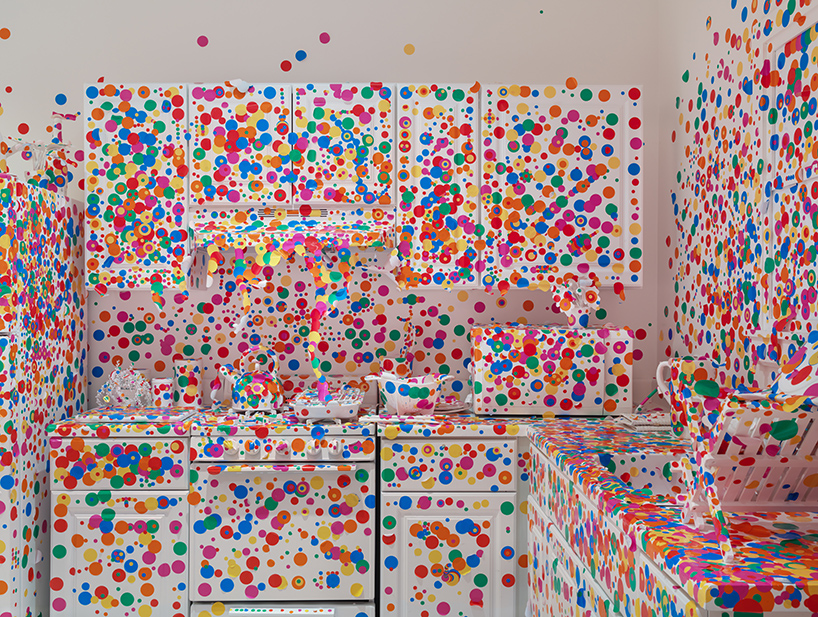

The pumpkin motif first appeared in some of Kusama’s drawings from the late 1940s and has repeatedly shown up in her paintings, sculptures, drawings, and installations. The artist was attracted to the pumpkin for its “charming and winsome form,” celebrating its lumpy, unpretentious, organic shape. Nestled into the landscape between fields of zinnia, periwinkle, and nasturtium flowers, she spotted an unusually shaped gourd the size of a man’s head. This work first appeared in the exhibition Floor Show, held at Castellane Gallery, in New York, in 1965.Ĭoming from a family that cultivated and sold plant seeds for a living, Kusama saw a pumpkin for the first time during a childhood visit to a seed-harvesting farm with her grandfather.
#Yayoi kusama the obliteration room series
Furthermore, the mirrors created a participatory experience by casting the visitor as the subject of the work, a feature that the artist demonstrated through a provocative series of self-portraits in which she used her body to activate the space. The reflective surfaces allowed her vision to transcend the physical limitations of her own productivity. Infinity Mirror Room- Phalli’ s Field was perhaps the most important breakthrough for Kusama during this immensely fruitful period. In response to the labor intensity of this work, she started to utilize mirrors to achieve similar repetition. She exhibited the works together in an attempt to create hallucinatory scenes of phallic surfaces but found the labor involved in making them physically and mentally taxing. Kusama spent much of her time between 19 sewing thousands of stuffed fabric tubers and grafting them to furniture and found objects to create her Accumulation sculptures. The rooms also provide an opportunity to examine the artist’s central themes, such as the celebration of life and its aftermath.īy tracing the development of these iconic installations alongside a selection of her other key artworks, Yayoi Kusama: Infinity Mirrors aims to reveal the significance of the Infinity MIrror Rooms amidst today’s renewed interest in experiential practices and virtual spaces. Ranging from peep-show-like chambers to multimedia installations, each of Kusama’s kaleidoscopic environments offers the chance to step into an illusion of infinite space. Over the course of her career, the artist has produced more than twenty distinct Infinity Mirror Rooms, and the Hirshhorn’s exhibition-the first to focus on this pioneering body of work-is presenting six of them, the most ever shown together.

Using mirrors, she transformed the intense repetition of her earlier paintings and works on paper into a perceptual experience. Yayoi Kusama had a breakthrough in 1965 when she produced Infinity Mirror Room-Phalli’s Field.


 0 kommentar(er)
0 kommentar(er)
